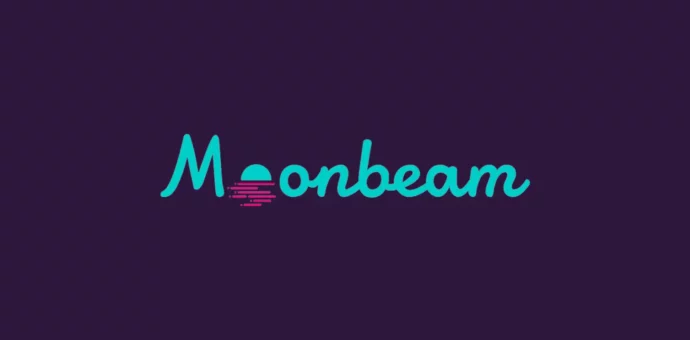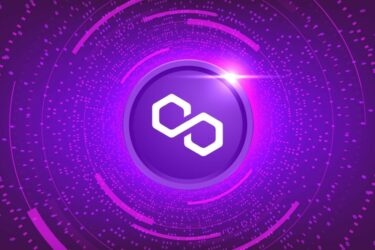Projects like the Moonbeam blockchain were created to solve integration issues among distinct blockchains in the crypto market. Also known as a cross-chain platform, Moonbeam further enables the development of decentralized applications (dApps) through smart contracts.
But what are the benefits for users of this connection that the blockchain proposes to make? Continue reading to clear all your doubts about what Moonbeam is and the characteristics of this network!
What is Moonbeam?
Moonbeam is an innovative blockchain characterized by interoperability and efficiency. An example of how this works in practice is the possibility for users to create Ethereum-compatible dApps, but within an environment with greater scalability and lower cost.
All this is possible because Moonbeam’s architecture combines solutions from two other blockchains: the power and size of the Ethereum network, and the scalability and efficiency of Polkadot. These features make the network an ideal alternative for developers seeking greater performance without sacrificing security.
In summary, Moonbeam integrates with other blockchains, simplifying the task for those who need to navigate through different networks. Not surprisingly, its role as a facilitator in the integration between different blockchain networks is shaping the future of the cryptocurrency sector and the digital economy.
What are the characteristics of Moonbeam?
But with so many blockchains on the market, what makes this network so special? Clear your doubts!
Environment Conducive to Development of dApps
Moonbeam stands out in the blockchain ecosystem for its advanced technology and adaptability. Using the Substrate framework, developed by Parity Technologies, Moonbeam offers a flexible and customizable environment for the development of dApps.
This approach allows developers to implement complex applications with greater efficiency and shorter development time. With Moonbeam, compatibility with Ethereum Virtual Machine (EVM) is one of its attractions, as it allows smart contracts and dApps on Ethereum to be migrated to Moonbeam with minimal changes.
Hybrid Consensus Protocol
Moonbeam adopts a hybrid consensus protocol based on Delegated Proof-of-Stake (DPoS), a significant advancement from Polkadot’s Nominated Proof of Stake (NPoS) concept. This protocol gives more power to token holders, allowing them to delegate their choice of collator candidates.
This consensus approach is a key aspect of Moonbeam’s structure, as it not only enhances the security and efficiency of the network but also promotes greater decentralization. This makes the network maintained by a diverse and engaged community, strengthening the ecosystem as a whole.
Unique Architecture and Interoperability
Moonbeam’s network architecture is designed to be scalable and interoperable. Being a parachain in the Polkadot network, it benefits from shared security and cross-chain interoperability that Polkadot offers.
This integration allows Moonbeam to efficiently communicate with other blockchains in the Polkadot network, facilitating the transfer of tokens and data between different networks in a secure and decentralized manner.
How Does Moonbeam’s Tokenomics Work?
Moonbeam is designed to promote a sustainable balance between supply and demand, encouraging active community participation and ensuring the longevity and stability of the platform.
GLMR: Moonbeam’s Native Token
Moonbeam has a native token, essential for various functions within the network: GLMR. This token is used to pay transaction fees, participate in governance, and interact with various applications on the platform.
Its utility transcends mere exchange value, as it also serves as an incentive mechanism, encouraging users to actively contribute to the health and security of the network.
Token Distribution Mechanics
Moonbeam’s token distribution strategy is carefully planned to ensure equitable and widespread distribution. A significant portion of the tokens is allocated for community development, staking rewards, and developer incentives.
This strategy promotes adoption and continuous development of the platform, while preventing excessive concentration of tokens in the hands of a few, maintaining a decentralized and fair ecosystem.
Utility and Application of Tokens
Besides being used to pay transaction fees, they are essential for network governance, allowing token holders to vote on update proposals or changes in the network.
This aspect strengthens the decentralized nature of Moonbeam, as it gives community members a direct vote in decisions that affect the future of the platform. Additionally, the tokens are used in various dApps on Moonbeam, demonstrating the versatility and integration of the token into the broader ecosystem.
Staking in Moonbeam
GLMR holders can participate in the staking process, helping to secure the network and receiving rewards for their participation.
This process not only strengthens the network’s security but also offers participants a way to accumulate more tokens, encouraging long-term retention and active participation in the network.
Moonbeam uses a dynamic staking system, adjusting rewards based on various factors, such as the total number of staked tokens, ensuring a balanced and sustainable system.
As we have shown throughout this content, one of Moonbeam’s goals is the connection between different networks. So, what do you think about learning a bit more about what Polkadot is and how it positions itself as an important player in the crypto market?







